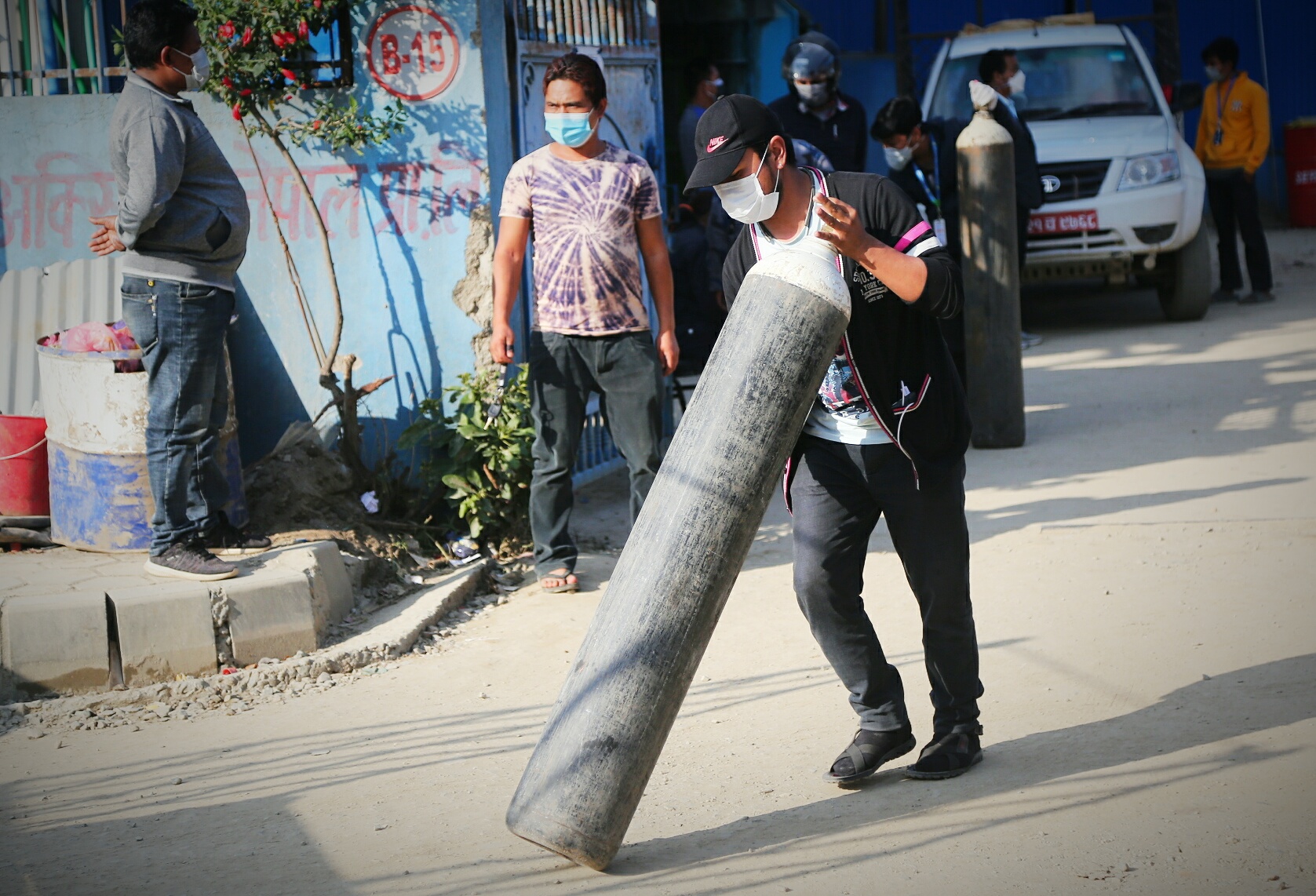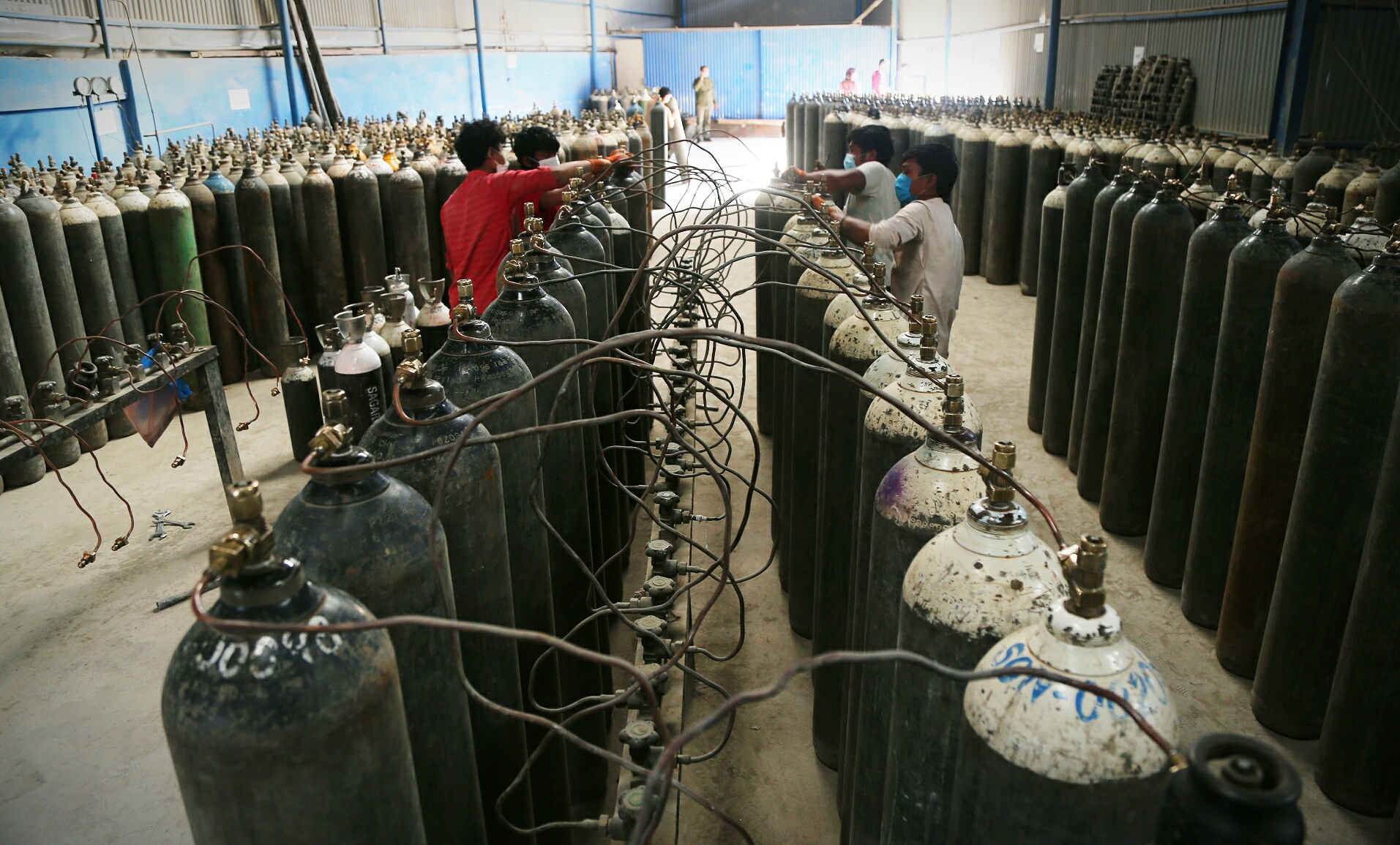Between May 11-15, Nepal reported 43,910 Covid positive cases and 997 deaths. Most people died because of lack of access to health facilities such as oxygen, beds, ICUs, and ventilators.
Despite this, authorities claim the country has enough beds and other medical infrastructure, and that the situation is fully under control.
But when renowned private hospitals stopped admitting new patients due to acute shortage of oxygen and other medical infrastructure, the government started panicking.
On May 13, the Ministry of Health and Population (MoHP) issued a circular to private hospitals across the country ordering them to prepare 100 beds each for Covid-19 patients and build their own oxygen plant within 15 days. The ministry said the government would help hospitals procure necessary materials.
During the meeting of Covid Crisis Management Center (CCMC) on May 16, Prime Minister KP Sharma Oli looked calmer and more composed than usual. It was a surprise for everyone to see him realize his mistakes. Oli confessed he hadn’t thought coronavirus would affect the country so much—contradicting his previous claims that Nepalis had a strong immune system and could fight the virus.

Soon after the release of the ministry circular, the Association of Private Health Institution Nepal (APHIN) published a press note stating that it was impossible to install an oxygen plant at any private hospital within 15 days. Even though the Cabinet had decided to waive custom duties on materials required to install oxygen plants, private hospitals flatly rejected the offer.
Basant Chaudhary, president of APHIN says, “Neither is there an easy access to the international market nor do the hospitals have enough budget for oxygen plants in this crisis. It is not possible [to install oxygen plants in 15 days].”
According to the MoHP, of the 185 private hospitals with over 100 beds, only 26 have oxygen plants. Among the 26, half of the plants don’t work, and the remaining half only works partially.
Nepal has received empty cylinders from abroad but getting oxygen to fill those cylinders remains a challenge. Almost every big government hospital has an oxygen plant but only a few of them work properly.
Oxygen factories on their own cannot fulfill the daily needs of all hospitals. As of now, there are eight oxygen factories in Kathmandu with the overall capacity of refilling almost 7,000 standard cylinders per day—which meets only half of the demand. Oxygen cylinders come in various sizes but seven-cubic-meters is the standard one.

“I heard the ministry withdrew the circular and redirected that the process of installing an oxygen plant start within 15 days,” says an official of Sumeru Hospital. Yet, the ministry has not officially said as much. He added that installing an oxygen plant requires electricity management, skilled human resources, enough space, and many other resources. “Even for check clearance, the bank takes almost a week, so a 15 day-period is impractical.”
The ministry has not clarified the capacity of the oxygen plant it wants in the hospitals. In this matter, the official atSumeru Hospital says, “We also don’t know.” He guesses that the MoHP may have directed the building of plants according to the needs of respective hospitals. Sumeru Hospital consumes around 150 standard oxygen cylinders every 24 hours.
There seemed to be much confusion between hospitals and the ministry regarding the capacity of oxygen plants. (ApEx tried to contact ministry officials but neither the spokesperson nor the joint spokesperson was available.)
On May 15, Nepal Korea Friendship Municipality Hospital at Bhaktapur, the community hospital affiliated with Madhyapur Thimi municipality, successfully installed an oxygen plant. Chairperson of the hospital management committee and Mayor Madan Sundar Shrestha says, “After a restless six months, we started the air-based oxygen plant today.” It cost almost seven million rupees.











